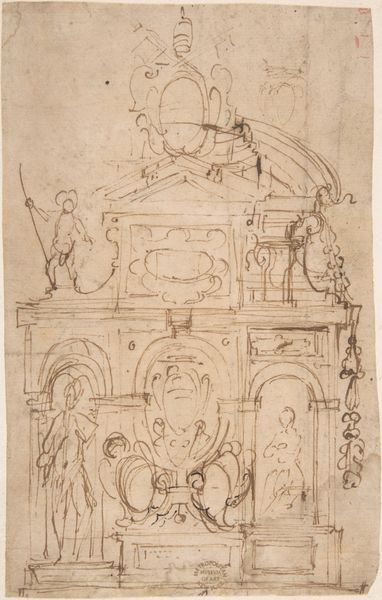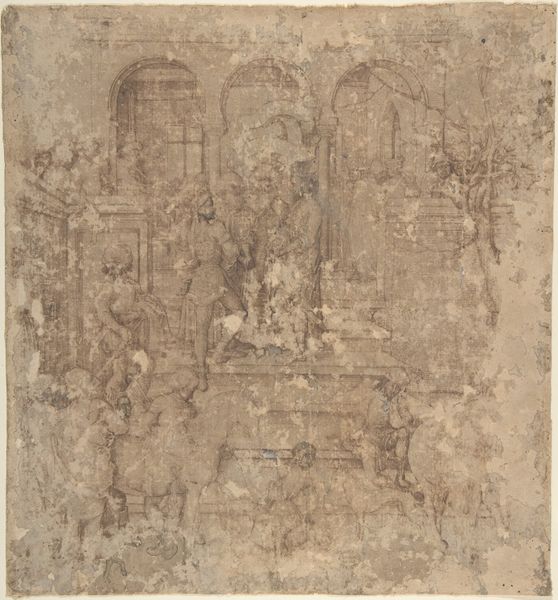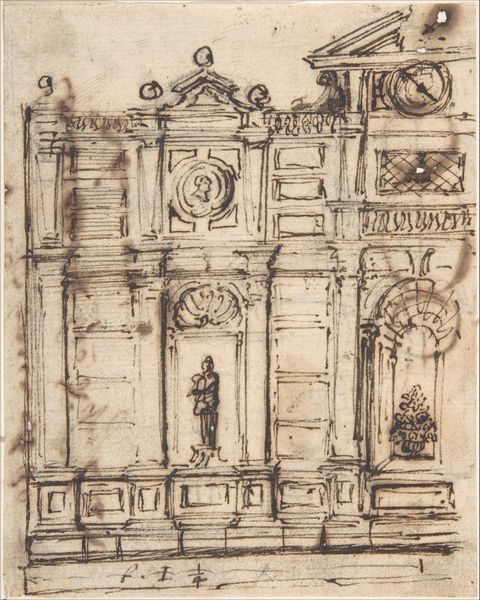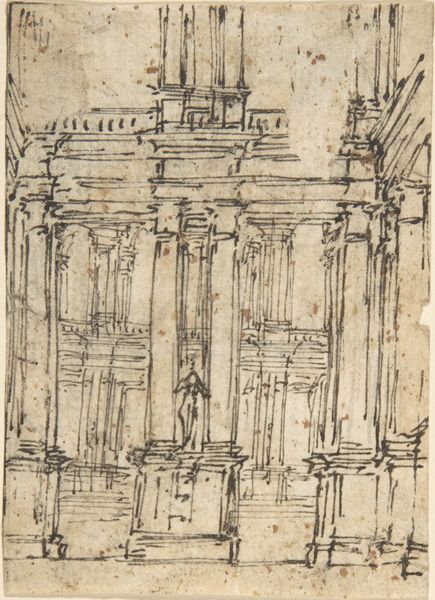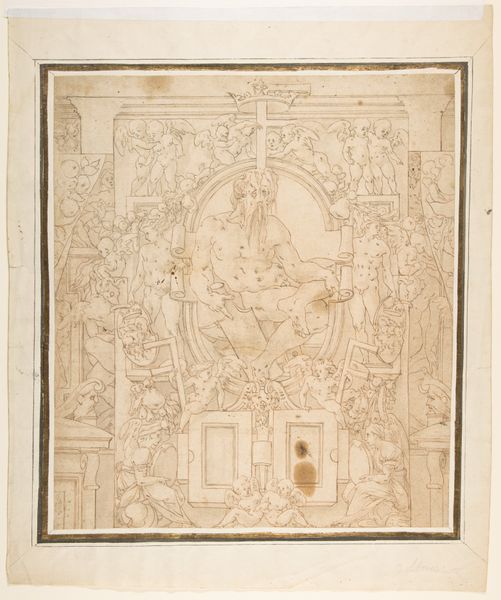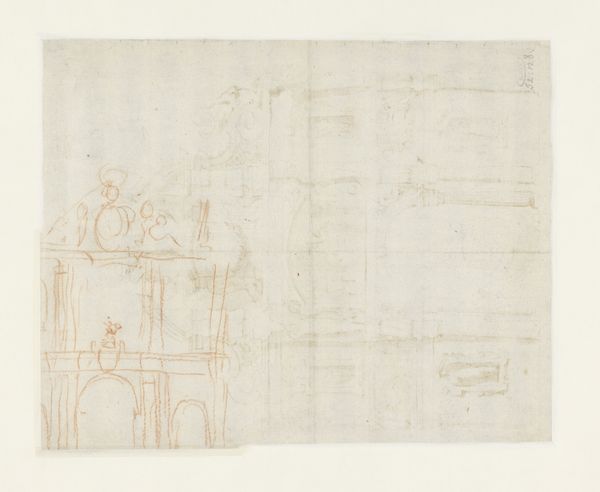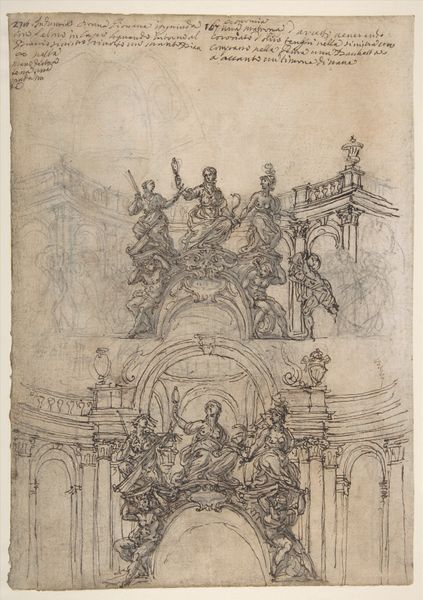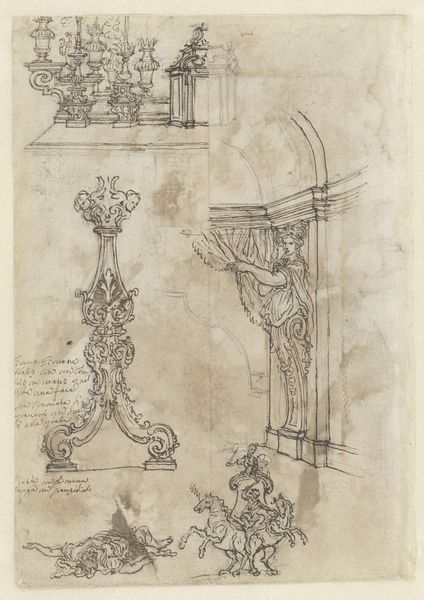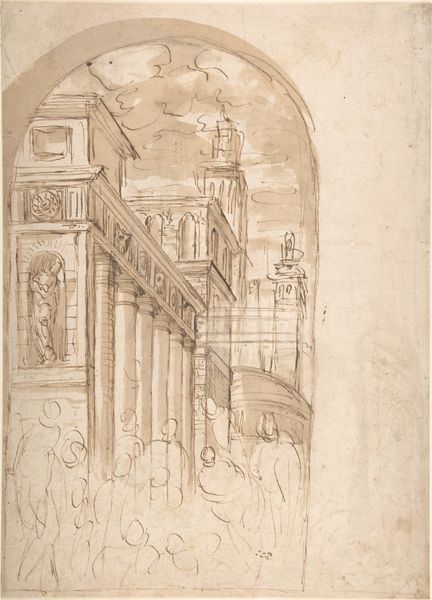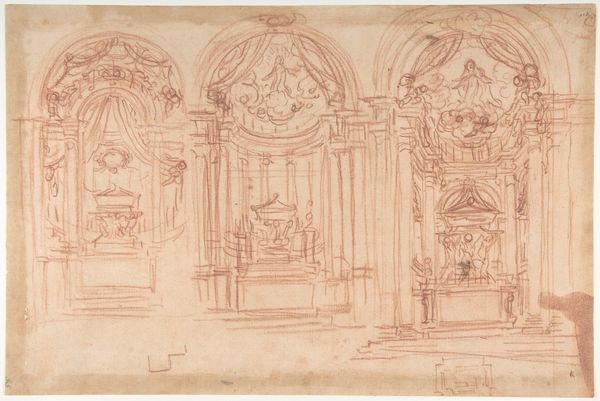
Two studies for a composition in grand architecture. One architectural sketch for the same and two figure studies 1556 - 1632
0:00
0:00
drawing, paper, ink, architecture
#
drawing
#
figuration
#
paper
#
11_renaissance
#
ink
#
architecture
Dimensions: 285 mm (height) x 201 mm (width) (bladmaal)
Curator: This intriguing work, done in ink on paper, is entitled "Two studies for a composition in grand architecture. One architectural sketch for the same and two figure studies" attributed to Maganza from sometime between 1556 and 1632. What is your first reaction? Editor: The overall mood is ephemeral, almost dreamlike. It reminds me of architectural renderings for stage sets, full of implied grandeur but undeniably sketchy. Curator: That is an astute observation. Consider the period—the late Renaissance. Power and display were critical, influencing everything from the layout of cities to dramatic productions. This sheet reflects the intertwined aspects of civic authority and cultural spectacle. We can interpret it through lenses of political theory as well. Who got access to that architecture? How were hierarchies reinforced by the arrangement of those theatrical spaces? Editor: I see classic iconography here. Take the architectural settings: they immediately speak of stability and permanence, core societal values. And consider the drapery over the portal—a stage curtain, ready to reveal something momentous. It is also interesting to note the disjunction of the body as an expression of a humanist project being subsumed by these overwhelming edifices. Curator: Indeed. It is important to address the depiction of the figures. They seem almost afterthoughts, scattered around, while the buildings possess significant definition. This reinforces my idea that the drawing is exploring the diminishing influence of the individual within overwhelming civic structures. Does the placement challenge the anthropocentric world view? Editor: I can certainly see that. At the same time, there's an enduring story here, of human ambition manifested in these grandiose structures. The desire to build monuments, literally and figuratively, continues, doesn’t it? These sketches show those cultural desires already fully visualized during this time. Curator: It also strikes me how gender dynamics play out, in reality and allegorically, within similar artistic expressions. What perspectives do you glean on those questions, considering your symbolic lens? Editor: Considering we’re looking at just fragments—fragments of buildings, human figures, even possible narratives—perhaps the enduring story is really about interpretation itself, which, of course, becomes part of the ongoing meaning. It is allusive, rather than decisive. Curator: That’s beautifully said. It is through these interpretative dialogues that artworks truly stay vital across eras. Editor: Exactly. And hopefully, this short discussion offers others new frameworks to experience this artwork today.
Comments
No comments
Be the first to comment and join the conversation on the ultimate creative platform.

